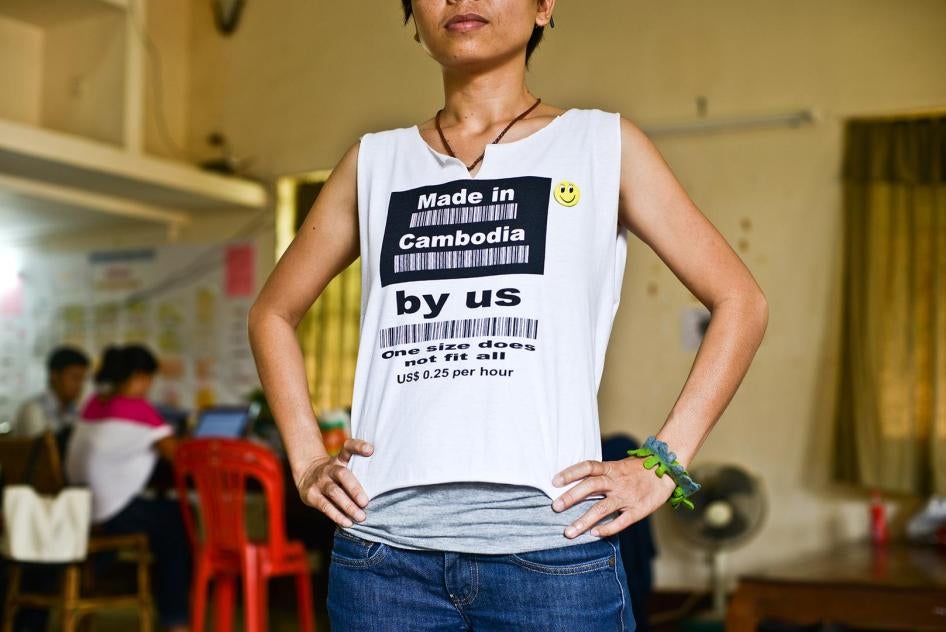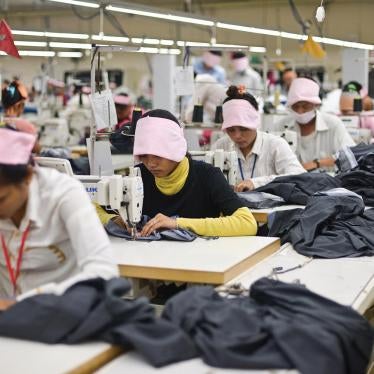“It doesn’t matter whether you are pregnant or not – whether you are sick or not – you have to sit and work,” Po Pov told my colleague about her job in a Cambodian garment factory. “If you take a break, the work piles up on the machine and the supervisor will come and shout. And if a pregnant worker is seen as working ‘slowly,’ her contract won’t be renewed.”
Fired for becoming pregnant? An endemic problem in Cambodian factories supplying international clothing brands marketed and sold around the world. A missing $8 billion? Chalk it up to stolen profits by employers who don’t pay their nannies and housecleaners kept in forced labour.
March 8 is International Women’s Day. While women workers are a core part of the global economy, their contributions – and the abuses they experience – often remain invisible. This is especially true for workers in female-dominated sectors such as domestic work and the garment industry that are hidden from the public eye and considered “low-skilled”.
'Women’s work' is profoundly devalued
The International Labour Organization estimates that domestic work is one of the most common forms of employment for women – 1 in every 13 female wage earners globally, and as many as 1 in 4 in Latin America. Families in countries such as the Philippines and Indonesia receive billions of dollars in remittances from domestic workers abroad.
When parents entrust their young children to someone’s care, it should raise the incentives to treat those workers well, to formalize opportunities for training and accreditation, and to recognize that domestic workers free them to pursue careers outside the home. But despite the economic and social importance of this work – the cooking, cleaning, and caregiving associated with traditional “women’s work” inside the home remain profoundly devalued.
Only 10% of domestic workers worldwide are employed in countries that extend them equal protection under national labour laws. Some 30% work in countries ranging from the United Arab Emirates to Singapore that exclude domestic workers from labour laws completely, leaving them without such basic protections as a minimum wage, overtime pay, rest days, or social security. Others, such as the United States, fall somewhere in between, for example by guaranteeing a minimum wage but denying domestic workers the right to form unions.
Depressingly common abuse
In the past decade, my colleagues and I at Human Rights Watch have documented an array of depressingly common abuses against domestic workers – unpaid wages, working from early morning to late night with few or no breaks, physical confinement in the workplace, and in some cases, physical or sexual abuse. Domestic workers often have few channels for redress or information about the legal protections they may be entitled to.
These types of abuses take place in the “formal” sector as well. Our research from 2013 to 2015 in Cambodia’s garment sector, where 90% of workers are women, found forced overtime, lack of rest breaks, sexual harassment, efforts to keep them from forming independent unions, and underage child workers despite labour law protections on paper. While some brands have taken steps to address the problems, abuses remain rife, particularly among subcontracting factories that escape scrutiny.
The invisible, the exploited
While work in garment factories may not be “hidden behind closed doors” in the same way as work in private homes, the lack of transparency in supply chains of many international brands effectively leaves women workers invisible to consumers and labour watchdogs. Since very few international clothing brands disclose the names and locations of their suppliers, your latest clothing purchase could easily have been produced in exploitative conditions.
Unlike some problems that can seem intractable, there are clear and practical steps that governments and employers – whether large corporations or private households – can take to improve women’s rights in the workplace.
In the garment industry, companies should publish the lists of their suppliers so they can be better monitored. They should ensure more robust, independent audits of their factories by credible third-party monitors with labour rights expertise. And they can engage in collaborations such as the Bangladesh Accord on workplace safety that push for industry-wide change.
Protecting the right to organize – whether for garment workers or domestic workers – is also key. Domestic workers operating in countries where they can organize have steadily won better protections. They have become more visible and better able to sensitize governments to their marginalization. They successfully campaigned for global labour standards on domestic work in 2011 and have since won related legal advances in 35 countries – ranging from minimum wage laws to comprehensive legislation accompanied by enforcement campaigns.
Employers and governments should mark International Women’s Day by pledging to improve the lot of women workers, increase their visibility, and protect their right to organize. These steps will help expose discrimination and abuse, and create opportunities for women to work in places that value their contributions and respect their rights. These steps can help the millions of women who keep households and factories running – and their families – to live better lives.








